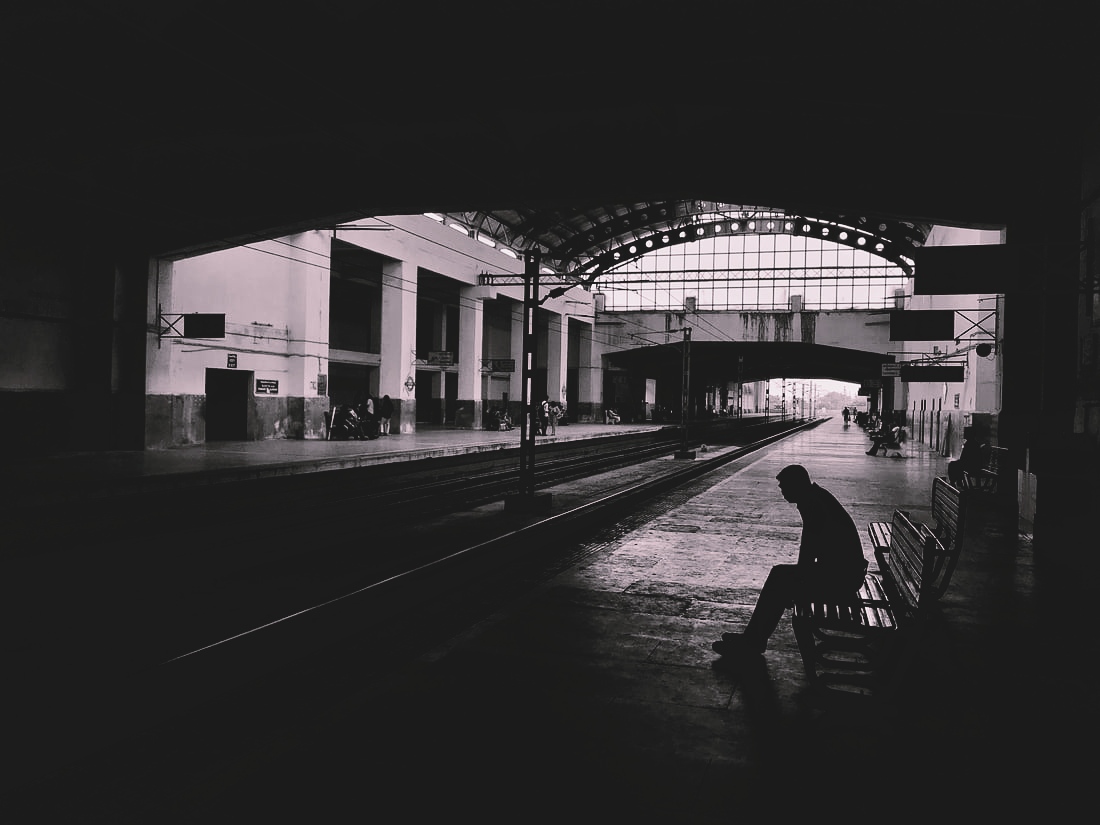
Published in 1890 by Ambrose Bierce, An Occurrence at Owl Creek Bridge is a short story centered around the American Civil War. Written in third-person narrative, this piece is best known for its irregular sequence and surprise ending.
An Occurrence at Owl Creek Bridge | Summary
An Occurrence at Owl Creek Bridge is split into three parts. The first part begins with a man standing on the edge of a railway bridge, hands tied behind him and noose knotted loosely around his neck. Below him is a stream and around him stand his executioners- soldiers of the Federal army- with their weapons and guns pointed down. Spectators seems to be facing the bridge, with the captain sternly crossing his arms and awaiting the proceedings. We learn that the man on the ledge, ready to be hanged, is a thirty-five year old civilian who seems to work in a plantation. In his last moments, he closes his eyes and imagines escaping from these clutches and returning home to his wife and children. He thinks of an idea- freeing his hands and untying the noose, diving into the water to evade any bullets. But just as those thoughts cross his mind, the sergeant signals for the hanging to begin.
We then move to the second section of the story. It’s here that we learn the name of the main character, the one standing at the edge of the bridge: Peyton Farquhar, a planter from Alabama who is also a politician dedicated to the Southern cause of the American Civil War. The story recalls how he came to the near-death position: he and his wife were at home when a soldier rode by asking for water. While his wife went to fetch it, Farquhar asked about the news regarding the situation. The soldier was seemingly innocent, casually mentioning how to reach the other side of the picket fence of Owl Creek Bridge, setting fire to a driftwood and getting past the Northern sentinel. After drinking his water, he gallops away, and Farquhar, strong for the rights of the South, starts planning. It is then revealed that the soldier was a Northerner in disguise, a Federal scout.
We now approach the third and final section of the piece. Peyton Farquhar falls through the bridge and into the stream, feeling pain from every direction- the noose had broken. He refuses to be shot, thinking it is far worse than being hung and drowned. He tries to remain underwater, knowing he would be shot as soon as he surfaced. But the need to breath catches up- as he gasps for air, the shots start firing. There is shouting everywhere as Farquhar swims away with the current. He suspects that rather than a single shot, the officers will use a charge of grape. In great difficulty, he manages to fling himself onto the gravel of the Southside. The sound of grapeshots keeps him alert, and the thought of his family keeps him going. And then there is a gunshot, a bullet to his neck. He sees his wife and wishes to run to her, thinking about how beautiful she is…and yet, his life slips from him.
But there is one more line- story ends with a plot twist: Peyton Farquhar is dead, hanging from a noose over the edge of the bridge. There was no wild escape, no gunshots- it was all in his imagination, set during his very last moments.
An Occurrence at Owl Creek Bridge | Analysis
Ambrose Bierce has an extremely distinct writing style, which includes dark themes, a stream of consciousness, and irregular sequences. All these elements are showcased in An Occurrence at Owl Creek Bridge- the main themes are war, rebellion and a fluid, almost inseparable blend of illusions and reality. Bierce employs imagery as well as foreshadowing, metaphors and plot twists. Most importantly, he splits the story into three parts to frame his non-chronological format in a steady flow to build up the surprise ending. Another aspect of the narrative is that though it is in third-person, the information is presented by only one character and hence it is quite dependable in terms of context- yet, we also view the deepest points of his mind, including his illusions, which deviates from reality. Hence, we may say this story uses a semi- reliable narrator.
In the first paragraph, the very image of a single man- bound to death, with several soldiers surrounding him and waiting for the execution- presents the cruelty and ruthlessness of war. The fact that there are “spectators” further underlines that fact. Bierce inserts foreshadowing just a few lines later. When he says “the butts of the rifles on the ground” as well as “the point of his sword upon the ground” in the case of the lieutenant, it alludes to the fact that nobody was ready to fire. Shooting takes an amount of precision and brief preparation. This may have foreshadowed the fact Farquhar’s escape was, in fact, an illusion. He imagines a ray of gunshots, yet everyone had their weapons facing the ground.
Farquhar also thinks “The liberal military code makes provision for hanging many kinds of persons, and gentlemen are not excluded.” This once more ties into the theme of war, as well as social status. Despite one’s hierarchy in society making a big difference in their daily life, at the end everyone dies. It does not matter if one is rich or poor, respected or despised- there is no exception in war and death. The title of the story alludes to the fact as well- the use of the word “Occurence” suggests that death and execution is a norm in war. Another line in section three, about the lieutenant preparing to fire gunshots, “the lieutenant on shore was taking a part in the morning’s work. How coldly and pitilessly.” ties into this as well- it is so poignant that it converges from the reality into the illusion.
When Farqurah eyes the stream below him, he notices a piece of driftwood. It appears in his line of sight several times as it floats away, and it may represent the freedom he cannot attain. It floats away in the way he wishes to, but no matter how much he tries, he cannot follow it. Even more fascinatingly, it is the Northern Scout’s words about “setting fire to the driftwood” that led to Farquhar’s capture in the first place. Farquhar thinks of the stream, “How slowly it appeared to move, What a sluggish stream!”. This is an example of Bierce’s use of metaphors in order to verbalize the concept of time, which plays a huge role in the piece. In his last moments, Farquhar imagines his wife and children, suddenly thinking of a way to escape. This represents the wishful thinking that comes with the ending life- imagining loved ones as well as possible avoidance of death. It also acts as a subtle link to the illusions of his mind.
In the second part, we note a tense change. From present tense, it switches to past tense to explain the context to the situation. This is true to the stream of consciousness and the unordered pattern of chronology– he employs a flashback. It is interesting to note how Bierce chooses to split this into sections. This solidifies a clarity to the reader despite the non-linear narrative. The story switches context, setting and tense, and even fluctuates between illusion and reality. And though the ending is surprising, the process of reading is not a confusing, unclear one. This section also mentions the way Farquhar gets set up and tricked by a Northern soldier, which highlights an element of targeting and betrayal. The soldier specifically came looking for his house, knowing that he was a politician who would be interested in fighting for the South, hence vulnerable to believing any news. He was pinpointed and lured into a trap. This luring- the very way which he ended up on the edge of the bridge- is symbolic to Farquhar’s emotion as he is about to be executed: trapped and longing for freedom.
In part three, Farquhar begins imagining his escape as though it is real. His entire illusion is driven from his overwhelming desire to live. The line “He opened his eyes in the darkness and saw above him a gleam of light, but how distant, how inaccessible!” not only emphasis the nearing of death- the light representing the life slipping away, and the inaccessibility representing the unescapable end. “How unaccessible” may also be a foreshadowing of the fact that it is not reality, hinting at how no matter how much Farquhar imagines, he cannot find a way out. The descriptions of him fighting off the noose and rope, holding his breath underwater for minutes and avoiding all the bullets also hint at the unrealistic nature of the scenario. Bierce is known for often depicting impossible events, and this seems to be one of them- an unachievable feat written into reality through the character’s desperate delusion.
During Farquhar’s imaginary escapade, the line “He was now in full possession of his physical senses.” holds great meaning. In reality, Farquhar is quite literally bound and held at an execution point. His next physical move is in the control of other people- he no longer has possession of his own body and movement. The disgust and anger at this fact translates into his mind-mirage, which depicts his ideal future: an escape. And in this ideal future, he regains full control of his own physicality. It is another representation of the longing for freedom, this time in a more literal sense. As he continues his imaginary escape and feels his surroundings fade out due to fatigue, he thinks “Objects were represented by their colors only.” This, though referring to the blurring of vision, may also be symbolic of racism and slavery. Set during the Civil War, where both these elements were at it’s unfortunate fore, this reference to representation on the basis of color may allude to the cruel system that was taking place.
His illusion ends as he sees his wife. This may be because she is his loved one, and therefore the last person he wants to see before he dies, even if it isn’t real. This shows a subconscious nudge from an aware part of his mind- somewhere, deep down, he may be aware that he will soon face his reality, and hence his illusion shows him what he wants to see in those last minutes. It is also important to note that the bullet that shot him dead during his imaginary escape was aimed to his neck. This is symbolized by the noose. Farqhar dies of hanging in reality, which is also by neck. This is Bierce’s technique of plot twists, delivered in the very last line of the short story. When he writes, “Peyton Farquhar was dead; his body, with a broken neck, swung gently from side to side beneath the timbers of the Owl Creek bridge.” is when the readers fully comprehend that Farquhar’s escape was not real. Until then, despite the foreshadowing, the flow and structure- as well as the adrenaline-filled emotion of the escape which leads readers to possibly overlook foreshadowing details- assists Bierce in ensuring a shocking ending.


